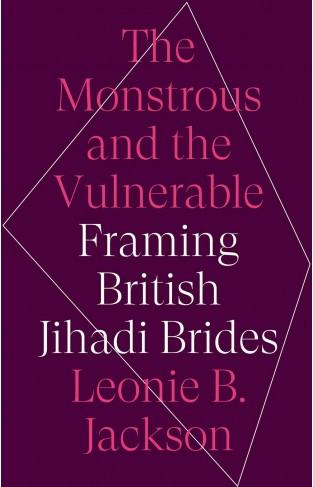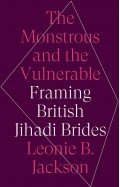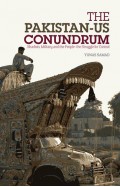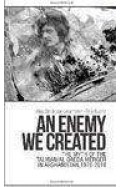- Home
- Categories
- Non Fiction
- Politics & Current Affairs
- The Monstrous and the Vulnerable: Framing British Jihadi Brides
The Monstrous and the Vulnerable: Framing British Jihadi Brides
By: Leonie B. Jackson
-
Rs 4,286.75
- Rs 6,595.00
- 35%
You save Rs 2,308.25.
Due to constant currency fluctuation, prices are subject to change with or without notice.
In June 2014, Abu Bakr al-Baghdadi declared an Islamic State in Iraq and Syria and called for Muslims around the world to migrate there. Over the next five years, around 150 women left the UK to heed this invitation, and the so- called 'jihadi brides' were rarely out of the news. This book traces the media fascination with those who joined the ‘caliphate’, including Sally Jones, Aqsa Mahmood and Shamima Begum. Through an analysis of the media that presented the 'brides' for public consumption, Leonie B. Jackson reveals the gendered dualistic construction of IS women as either monstrous or vulnerable. Just as the monstrous woman was sensationalised as irredeemably evil, the vulnerable girl was represented as groomed and naïve. Both subjects were constructed in such a way that women’s involvement in jihadism was detached from men’s, scrutinised more closely, and explained through gender stereotypes that both erased the agency of female extremists and neglected their stated motivations. As Jackson demonstrates, these media representations also contributed to the development of new norms for dealing with the ‘brides’, including targeted killing and the revocation of citizenship. While the vulnerable girl was potentially redeemable, the monstrous woman was increasingly considered expendable.
In June 2014, Abu Bakr al-Baghdadi declared an Islamic State in Iraq and Syria and called for Muslims around the world to migrate there. Over the next five years, around 150 women left the UK to heed this invitation, and the so- called 'jihadi brides' were rarely out of the news. This book traces the media fascination with those who joined the ‘caliphate’, including Sally Jones, Aqsa Mahmood and Shamima Begum. Through an analysis of the media that presented the 'brides' for public consumption, Leonie B. Jackson reveals the gendered dualistic construction of IS women as either monstrous or vulnerable. Just as the monstrous woman was sensationalised as irredeemably evil, the vulnerable girl was represented as groomed and naïve. Both subjects were constructed in such a way that women’s involvement in jihadism was detached from men’s, scrutinised more closely, and explained through gender stereotypes that both erased the agency of female extremists and neglected their stated motivations. As Jackson demonstrates, these media representations also contributed to the development of new norms for dealing with the ‘brides’, including targeted killing and the revocation of citizenship. While the vulnerable girl was potentially redeemable, the monstrous woman was increasingly considered expendable.
The Monstrous and the Vulnerable: Framing British Jihadi Brides
By: Leonie B. Jackson
Rs 4,286.75 Rs 6,595.00 Ex Tax :Rs 4,286.75
Zubin Mehta: A Musical Journey (An Authorized Biography)
By: VOID - Bakhtiar K. Dadabhoy
Rs 472.50 Rs 1,050.00 Ex Tax :Rs 472.50
The Origins of Political Order From Prehuman Times to the French RevolutioN
By: Francis Fukuyama
Rs 3,505.50 Rs 3,895.00 Ex Tax :Rs 3,505.50
Manning Up: How the Rise of Women Has Turned Men into Boys
By: Kay Hymowitz
Rs 646.75 Rs 995.00 Ex Tax :Rs 646.75
The Obama Syndrome: Surrender At Home War Abroad
By: Tariq Ali
Rs 1,165.50 Rs 1,295.00 Ex Tax :Rs 1,165.50
The Quest For Meaning: Developing A Philosophy Of Pluralism
By: Tariq Ramadan
Rs 1,255.50 Rs 1,395.00 Ex Tax :Rs 1,255.50
The Pakistan US Conundrum Jihadists The Military And The People The Struggle For Control
By: Yunas Samad
Rs 1,255.50 Rs 1,395.00 Ex Tax :Rs 1,255.50
An Enemy We Created: The Myth Of The Taliban Al Qaeda Merger In Afghanistan 19702010
By: Alex Strick van Linschoten
Rs 3,412.50 Rs 5,250.00 Ex Tax :Rs 3,412.50
WikiLeaks: Inside Julian Assanges War on Secrecy
By: David Leigh & Luke Harding
Rs 552.50 Rs 850.00 Ex Tax :Rs 552.50
No similar books from this author available at the moment.
No recently viewed books available at the moment.
Zubin Mehta: A Musical Journey (An Authorized Biography)
By: VOID - Bakhtiar K. Dadabhoy
Rs 472.50 Rs 1,050.00 Ex Tax :Rs 472.50
The Monstrous and the Vulnerable: Framing British Jihadi Brides
By: Leonie B. Jackson
Rs 4,286.75 Rs 6,595.00 Ex Tax :Rs 4,286.75














-120x187.jpg?q6)





-120x187.jpg?q6)



-120x187.jpg?q6)



